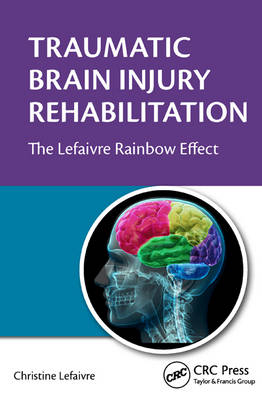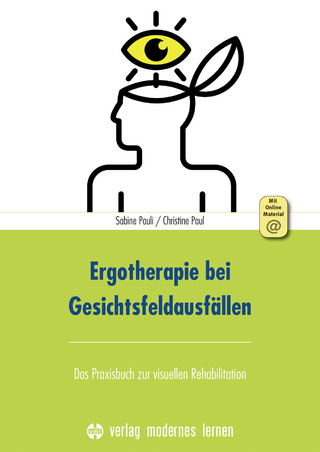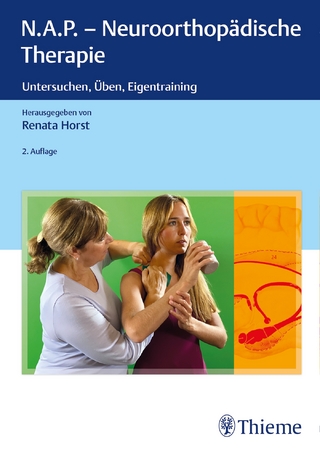
Traumatic Brain Injury Rehabilitation
Apple Academic Press Inc. (Verlag)
978-1-4822-2824-3 (ISBN)
Starting in the community, after the acute and in-patient rehabilitation phases of recovery have been completed, the Lefaivre Rainbow Effect maximizes the recovery process by positioning the TBI survivor to be a motivated participant in the arduous journey of recovery.
Key features:
Provides tools and templates for managing the individualized treatment and integration process, including additional material available for download
Addresses physical, emotional, and cognitive deficits with a strong influence on participation in life activities
Includes the unique theory of the traumatically induced dysfunctional family, with the aim to preserve the family unit and reduce the overall loss for the survivor of brain injury
Features a practical approach, including chapter summaries, case studies, diagrams, and templates
Offers guidance on producing an Independent Medical Evaluation and preparing effectively for cross examination in recognition of the adversarial aspect of many TBI cases
This essential text demonstrates how rehabilitation professionals, including occupational therapists, doctors, nurses, social workers, speech pathologists, and neuropsychologists, can use the Lefaivre Rainbow Effect in their practices to improve therapeutic outcomes for their clients.
Christine Lefaivre O.T.(C) is a registered occupational therapist, President of Rainbow Rehabilitation Inc., and a clinical Assistant Professor at the University of British Columbia, Canada.
The Human Spirit. Introduction. The Human Spirit. Forgiveness. Loss. Principles That Preserve Hope. Summary. Appendix 1A: Kubler-Ross’s Five Stages of Grief. The Lefaivre Rainbow Effect. Introduction. How the Lefaivre Rainbow Effect Came to Be. The Theory of the Rainbow Effect. The Approach. The Philosophy. The Assumptions. The Lefaivre Rainbow Effect Formula. Elements of the Rainbow Effect Formula. The Process of the Rainbow Effect. Providers of Services. Summary. Appendix 2A: Definitions of Service Providers. Total Sum. Introduction. Determining the Total Sum. How This Approach Differs from Current Trends. Preparing for the History Intake. Advocating to the Funder. The Process of Determining the Total Sum. Establishing the Community Team. The History-Taking Process. Suggestions for Taking a Client’s History. Balanced Lifestyle Inventory. Clinician Self-Assessment. Summary. Appendix 3A: History-Taking Template. Appendix 3B: Balanced Lifestyle Sheet. Appendix 3C: Severity of Brain Injury Stratification. Appendix 3D: Post-traumatic Amnesia. Appendix 3E: Glasgow Coma Scale. Glasgow Coma Scale. Appendix 3F: Rancho Los Amigos Scale: Levels of Cognitive Functioning. Appendix 3G: Form 1: Clinician Self-Checklist for Establishing Therapeutic Rapport. Appendix 3H: Form 2: Clinician Self-Checklist for Determining the Total Sum. The Loss. The Loss. The Process of Transferring the Client from. Hospital to Home and Community. Case Manager. Initial Clinical Reports Produced by Community. Clinicians. Preparing for the Team Meeting. Summary of How the Case Manager will Run a. Team Meeting. Summary. Appendix 4A: Cross-Reference of Assessment Tools and Sectors of Balanced Lifestyle Example for an Occupational Therapist. Educating the Family. Introduction. Family Meeting. Burn Blister Analogy. Introducing Stress. The Interplay between Stress and Organic Symptoms. Summary. The Loss…Stress. Stress. The Process for Managing Stress. Summary. The Traumatically-Induced Dysfunctional Family Theory. Introduction. Systems in General. Family Systems. Ideal Conditions for Best Clinical Outcomes. Outcomes with Clinical Intervention. Summary. Intervention. Introduction. Setting the Stage for the Intervention. Assumptions. The Brain—A Brief Overview. Limbic System. Memory. Sensory Overload: Analogy of a Breaker Box. Some Causes of Sensory Overload. Energy Conservation. Setting Goals. Observations. Cognitive Retraining Strategies. Useful Therapeutic Hints. Summary. Residual Loss Cost-of-Future-Care Analysis. Introduction. Helpful Hints for Preparing a Cost-of-Future-. Care Analysis. Summary. Appendix 9A: Template for Creating a Cost-of-. Future-Care Analysis. Litigation. Introduction. The Litigation Process. The Expert Witness. Important Points to Remember for the Expert Witness. Medical Legal Report Writing. My To-Do’s Preparing to Go to Court. Expert Witness Testimony. Summary. Appendix 10A: Litigation Terms Defined. Business Practices and Public Relations. Introduction. What Does a Good Business Profile Look Like?. Establishing a Professional Profile in the Start-Up Phase. Enhancing Your Image: Public Relations. Summary. Four-Week Time Management System. Introduction. The Premise. Goals of the Time Management System. The Process. How the Time Management System Works. Case Histories and To-Do’s for Time Management System. The 4-Week Schedule. Quality Statistics. How to Prepare Quality Statistics. Summary. Diverse Funding. Introduction. Funding Sources. Tort Claims. Partial No-Fault System. No-Fault System. Government Funding. Medication. Vocational Retraining. Disability Tax Credit. Workers’ Compensation. Veterans Affairs and Military Benefits. Aboriginal Affairs. Victims Assistance. Blue Cross and Blue Shield. Private Disability Insurance. Homeowner Insurance. Travel Insurance. Alternate Sources of Funding for Service Provision. Private Funding. Fund-Raising. Summary. The Use of Volunteers. Introduction. The Use of Volunteers. The Recruitment of University or College Students. Orientation and Education of Volunteers. Summary. Ethical Considerations. Introduction. Prevention Identification of Risk Factors and. Improvement of Public Policy. International Sharing of Information and Standards. Specialized Training. Barriers. Selection of Community Service Providers. Summary. Glossary of Terms. References. Appendix: Brain Injury Associations.
| Erscheint lt. Verlag | 7.8.2014 |
|---|---|
| Zusatzinfo | 32 Tables, black and white; 196 Illustrations, black and white |
| Verlagsort | Oakville |
| Sprache | englisch |
| Maße | 156 x 234 mm |
| Gewicht | 740 g |
| Themenwelt | Medizin / Pharmazie ► Gesundheitsfachberufe ► Hebamme / Entbindungspfleger |
| Medizin / Pharmazie ► Medizinische Fachgebiete ► Neurologie | |
| Physiotherapie / Ergotherapie ► Rehabilitation ► Neuro-Rehabilitation | |
| ISBN-10 | 1-4822-2824-6 / 1482228246 |
| ISBN-13 | 978-1-4822-2824-3 / 9781482228243 |
| Zustand | Neuware |
| Haben Sie eine Frage zum Produkt? |
aus dem Bereich


